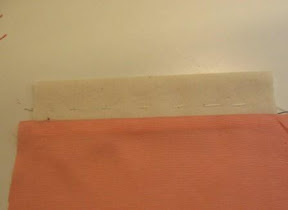This post is inspired by Lindsay's post in which she looks back on her sewing in 2008 and goals for 2009. This is my looking back to the last sewing year, which was less productive as hoped. I checked which reviews I made this year on Pattern Review (25, wish it was more), I checked my blog to see what I sewed and didn't write reviews for, and added 2 or 3 things I made, and never wrote about at all (no time as main reason).
The next graph gives a picture of the pattern companies I use.

Not surprising at all, BWOF for the main part, self drafted is mainly due to my linge rie items. Knip has a larger share than I would have guessed, but there the clothes for DD are giving the number more emphasis.
The other chart I made was for the type of garments I make.

Well, what can I say. I'm not a dress or skirts person. Only 1 skirt this year, and 2 dresses! I do see nice patterns for these, but somehow other things come first. And even those in my closet, are not worn very often. Must be my in general casual life. Blouses and t-shirts are quite the main part of my sewing.
Most liked garments

Oops, all BWOF patterns.
- Summer jacket
Really nice and good fitting. Got a lot of compliments on that one when wearing this on a few occasions - My last pair of pants Worn several times already in three weeks, today including, it's so comfortable
- The famous wrap top from the January issue, absolutely a winner to me. Wondering whether this is one of the most reviewed tops on PR this year.
Failures

Both are too low in the front, and the fabric of the white Knip blouse is itching. I've worn the BWOF top on the right once with a cami, but it just didn't feel right.
Unfinished projects, not beyond muslin stage

This has been perhaps the most frustrating this year: starting something and not finishing. Sometimes I'm just so eager to start something, and then life gets in the way, and it just doesn't work. In that feeling I also count the pieces of fabric I bought with the intention of sewing "right away", but on which I didn't do a thing beyond dreaming of what could be. And that is not too bad, dreaming.
Goals?
I have no specific goals for next year. I'd like to sew one or two capsule wardrobes (5-6 accompanying items), and I'd like to sew a few more bags, though I've been thinking that I just don't have time to do those too and skip the idea of making bags. We'll see how it goes. I might do something completely different and adjust my plans to the latest BWOF issue each month!
Technically I just want to improve my skills. And I would like to knock off a few more garments.
Starting with this one: a Rick Owen top which was discussed in a thread on Pattern Review and for which I already made a draping of the front. Yesterday I finally found some great knit fabric with enough drape. First finish the sets I'm working on, then this is the next project.


































































